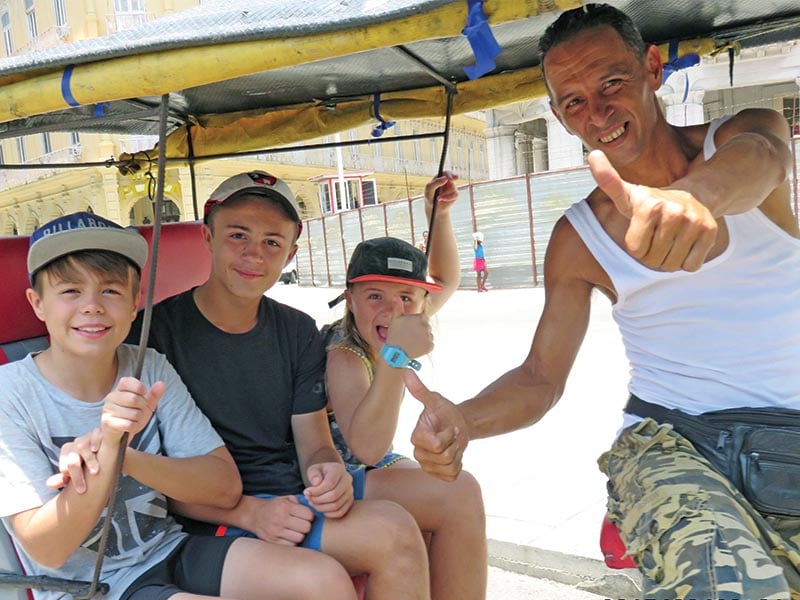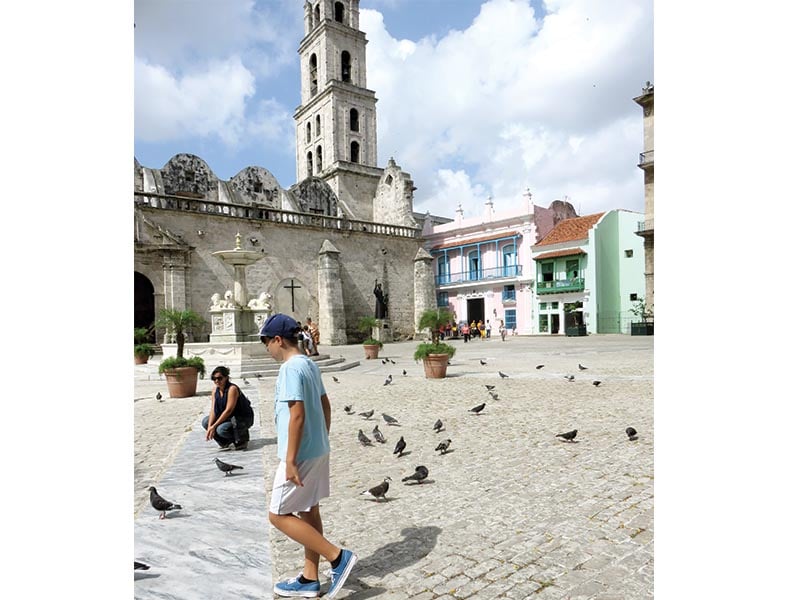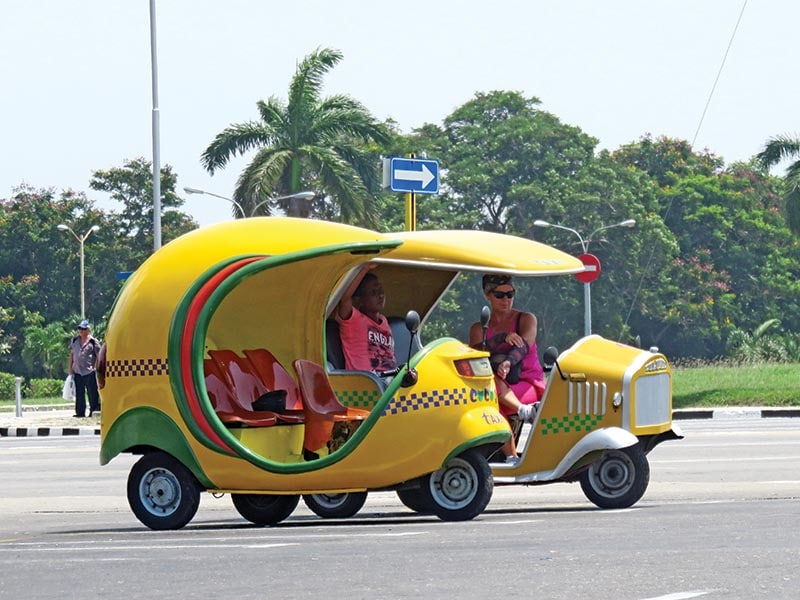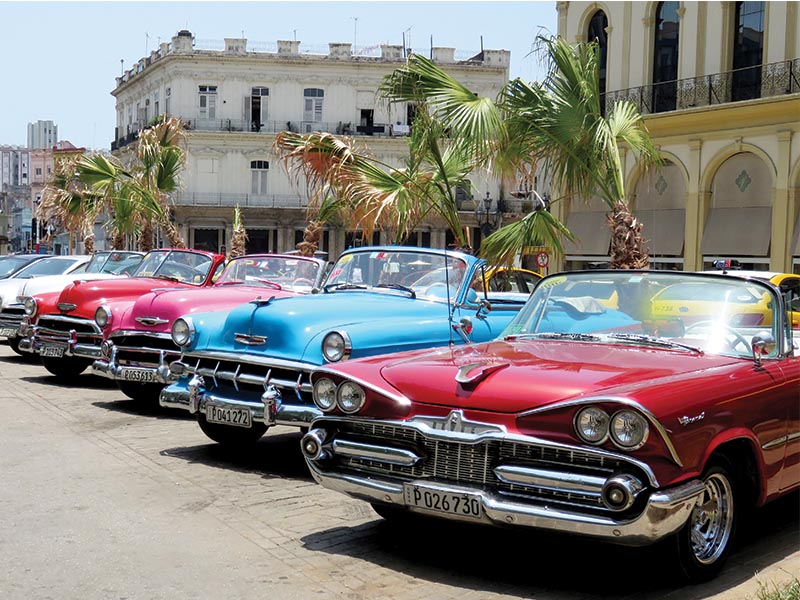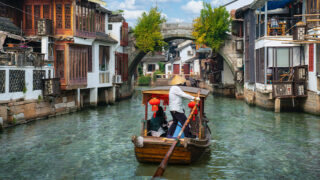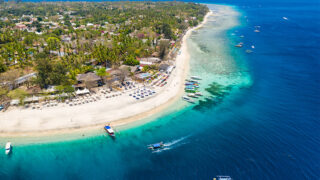Cuba has always held a fascination for me – Castro, the Bay of Pigs and the Cuban Missile Crisis were names and events that stood out in school history lessons. Who was Che Guevara? Why was he plastered on bags and T-shirts around the world? Was it true Cubans were still driving around in cars from the 1950s? And why had Castro pressed the pause button on economic development half a century ago?
Change is now on the horizon for Cuba and its people. After ailing leader Fidel Castro handed power to his younger brother Raul, many Cubans thought they’d heard it all before when he announced changes to the rules on private ownership of houses and businesses, and travelling abroad. They were wrong, and this old (he’s 84) “new leader” of Cuba really has ushered in a new era. And diplomatic relations having been re-established with the US and Cuba earlier this year, the winds of change look set to sweep through Cuba.
A former Spanish colony, its culture and language is intermixed with French, African, Jamaican and indigenous Taino influences. And, despite the socialist regime, vibrant music and dance spill from every street corner, especially in its capital city, Havana.
Havana
Central Havana is split into three neighbourhoods: Habana Vieja (old town), Centre Habana and Vedado. Most tourists occupy themselves with the old area; with more than 900 buildings of historical importance and four main squares, there’s plenty to see here.
Stand still for even a short time in Havana and you’ll be approached by someone trying to sell you something, take you to their restaurant or show you round. If you aren’t interested, though, it’s easy to do your own thing. We agreed a price with local guide Joe, and he took us on a two-hour walking tour of old Havana.
The oldest square isn’t Plaza Vieja, as its name may suggest (although it was laid out in 1559): Plaza de Armas predates it by a couple of decades. Old women still sit here, puffing on their cigars (and they’re quite partial to the odd tip from tourists in exchange for a photo), and while the wide range of architecture from Baroque to Art Deco may have been lost on my children, the Museo del Chocolate (museum of chocolate – more like a café that serves, well, everything made of chocolate) and the Museo de la Revolución, where they could put their fingers in real bullet holes, did prove a hit.
Cars
Think of Cuba and, apart from cigars, it will be classic cars that spring to mind. You won’t be disappointed – what’s on the road in Cuba really isn’t like anywhere else in the world. Before 1959, cars like Pontiacs, Fords, Buicks, Studebakers, Oldsmobiles and Chevrolets were popular imports. But as the US trade embargo, or “blockade”, as Cubans call it, took hold, in drove the Volga, Moskvitch, Lada and other Eastern Bloc classics.
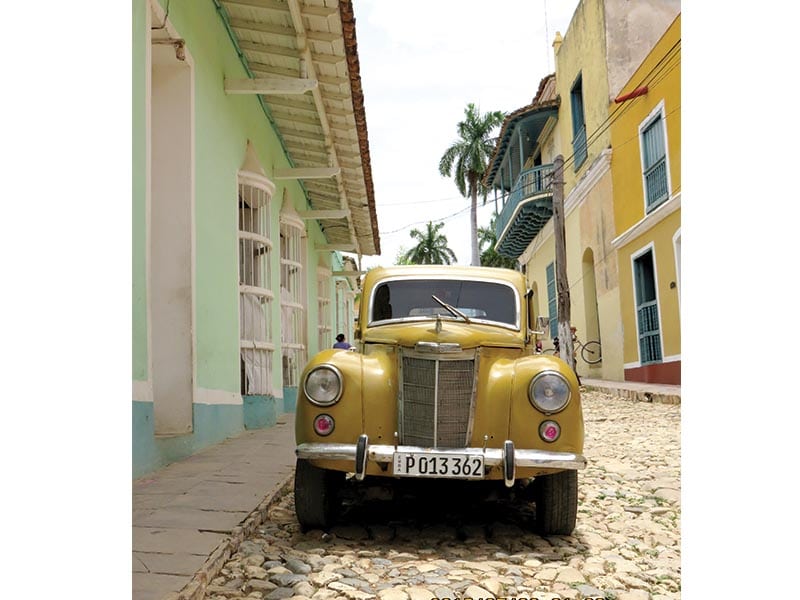
Decades later, many of them are still clocking up the miles. Parts are extremely difficult to come by, but Cubans are adept at making do and mending, and have found a way to keep them on the road. The vibrant colours, tall fins and extensive chrome make photographing and hiring them out a popular tourist pastime. We were not immune, and took a two-hour spin with a driver for around S$40 – very cool!
Accommodation and food
We stayed at the Hotel Parque Central, a modern and stylish five-star hotel just on the edge of the old town. To the alarm of my children, Wi-Fi is not freely available in Cuba: the connection can be dodgy and access expensive. I enjoyed being free of my phone and emails for much of the time, but it did make it more difficult to plan our trip. Booking large hotels before you depart is easy by email, but getting in touch with small guesthouses is trickier. We hadn’t booked all our accommodation and took a chance we would find it on the way. We needn’t have worried; Cuba is now teeming with new places eager to attract the tourist.
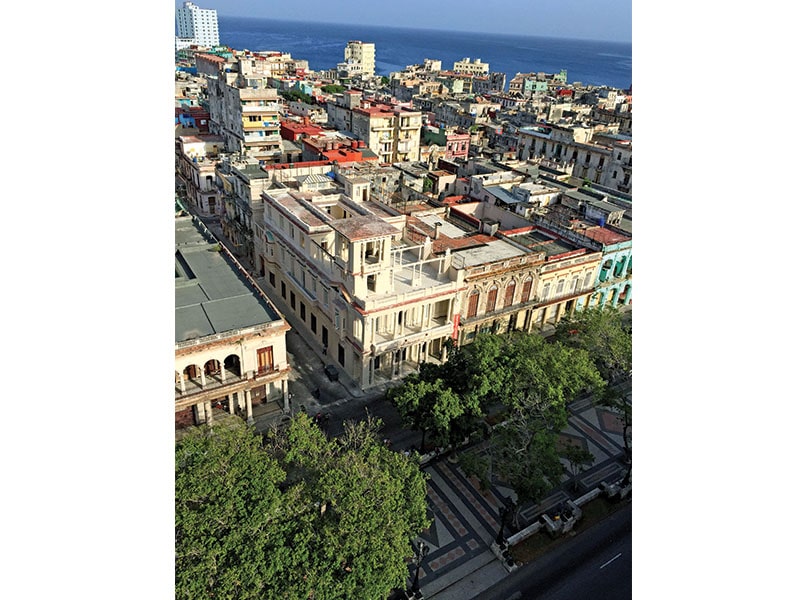
Refreshingly, you won’t find fast food outlets in communist Cuba, and there’s minimal advertising – apart from billboards exalting the glory of the revolution. The food is very good and fresh, partly due to the embargo; Cuba has a policy of organic, localised agriculture, but you can expect to pay the price of an average meal in Singapore to eat in a decent restaurant in Havana. It’s only when you eat and stay local that things will be extremely cheap.
We also spent one night at the historic Hotel Sevilla in Havana at the end of our trip. There’s a big helping of shabby chic here, and you know you’re staying where Al Capone once hired out the entire sixth floor and Graham Greene set his novel Our Man in Havana in Room 501. I stayed in Room 801, just three floors above!
Driving
Havana is the starting point for any Cuban adventure – and the rest won’t disappoint. It’s a huge island and you’ll have to be selective. We hired a car and drove ourselves, although arranging transport and a driver is fairly easy. We were lucky in securing a hire car on the spot, as when we dropped off the car we spotted several families waiting for their hire cars; from the frayed tempers, I suspect there weren’t enough vehicles to go round.
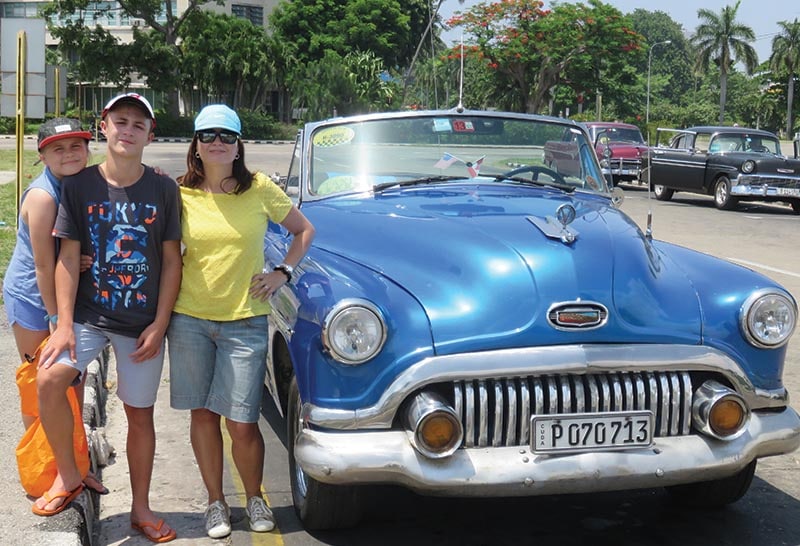
We had read that the roads were poor and signs virtually non-existent, but to our pleasant surprise we found driving pretty easy – there’s hardly any traffic on the main roads, and road signs were accurate if not plentiful. A phone app with a map of Cuba got us out of trouble a few times, and we filled up whenever we came across a petrol station. On the minor roads, we got stuck behind a few horse-and-carts – still the most common way to get about in Cuba – but it was cool pulling up at traffic lights next to a 1950s classic convertible or two!
After Havana, we chose to focus on Cayo Coco for the beaches and then head south to Trinidad, a must in any itinerary.
Cayo Coco
After a long drive from Havana, passing through the pretty town of Santa Clara – the final resting place of Che Guevara – you approach the island of Cayo Coco via a 27km causeway that cuts in half the Bay of Dogs (Bahia de Perros). The causeway passes through a beautiful area of swamps and scrubland, populated by wild cattle. A flock of pink flamingos was resting in the shallow water just off the roadside.
Accommodation in Cayo Coco is in big, all-inclusive tourist hotels; we stayed at the Hotel Mojito, part of the Iberostar chain and set on a stunning Caribbean beach. It reminded me of being a kid on family holidays in Spain in the 1970s! With nightly magic shows, cabarets, and play areas in abundance, the children loved it. We also drove the short distance to the famous Playa Pilar on Cayo Guillermo, billed as one of the most stunning beaches in the area. Fine, pure sand with crystal clear water makes this a memorable place.
It’s the town of Trinidad, however, that will really take your breath away.
Trinidad
Where to begin with this UNESCO World Heritage Site? It was in the nearby sugar plantations a couple of hundred years ago where Spanish merchants and owners made their money. They spent it on building large mansions filled with Italian frescoes, French ornaments and Wedgwood china. Luckily for us, nothing much has changed since the 1850s and many of these former mansions have now been converted into casas particulares, or private guesthouses, where you can marvel at the 200-year-old beams and be served coffee in genuine antique china. Thanks to recent changes in the privatisation laws, there are literally hundreds of beautiful places to stay and plenty of good restaurants.
We hadn’t booked a hotel in Trinidad, and after a quick walk around town we happened upon the Hostal Lola, just renovated by a local family. The next three nights, including evening meals, cost the equivalent of just one night in our hotel in Havana.
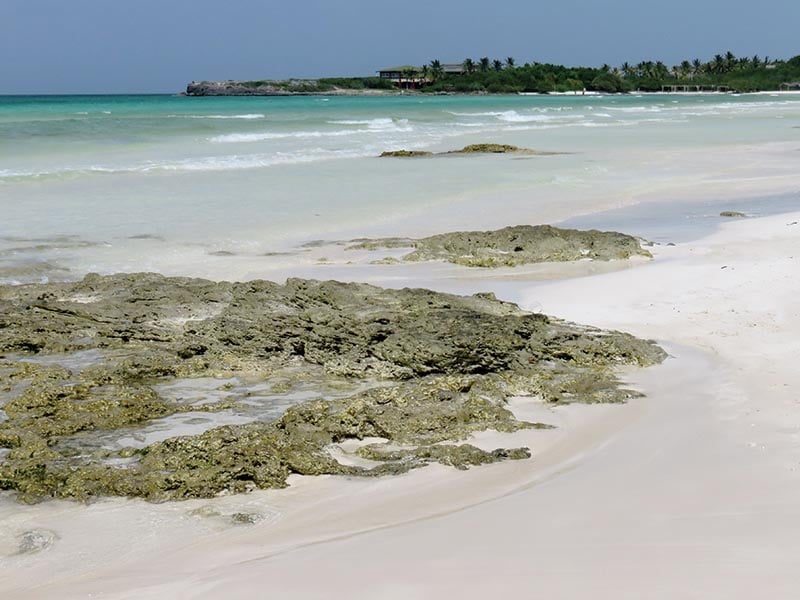
The streets are mostly cobbled and all eventually lead to the Plaza Mayor or main square, flanked by museums, churches and historical houses, and at its heart the pastel-yellow bell tower of the former convent of San Francisco de Assisi. Wandering the atmospheric streets, taking in the atmosphere and browsing the artisan shops are enough to keep you occupied. If you fancy more, the pretty beaches of Playa Ancon and La Boca are a short drive away.
Heading back to Havana, we broke our journey at Cienfuegos, a coastal town with a distinct French Riviera feel, influenced by the French pioneers who settled there after 1819. This neoclassical city has wide, tree-lined boulevards laid out in a perfect grid formation, and was also named a World Heritage Site by UNESCO, in 2005. Sugar merchants built mansions and palaces, some of the prettiest ones in Cuba, along the Punta Gorda, a wafer-thin peninsular which cuts across the bay. We had lunch right on the waterfront, while other tourists lounged on the pontoons and slipped lazily into the sea to cool off.
All change
With three children in tow and five different hotels in 11 nights, this wasn’t our most relaxing holiday ever; but we got to see things in Cuba we can’t see anywhere else in the world – and that’s why you should go.
Meanwhile, 11 million Cubans are poised for what will happen next. The US trade embargo is still in place and it will take a vote in the US Congress to lift it, but many Cubans are ready to embrace capitalism and its trappings. So if you to want see what Cuba was like in the “old days” you still have time, but start planning your trip now.
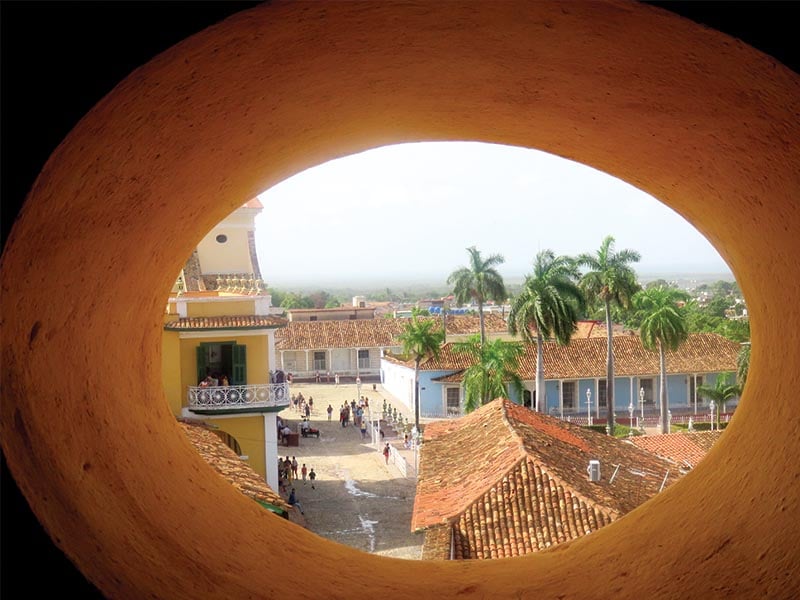
FACT FILE
* Cuba has two currencies: convertibles and pesos; tourists use convertibles.
* Take cash, especially euros and British pounds. US dollars don’t talk in Cuba, and you can’t use any US-affiliated credit cards. In fact, US citizens aren’t officially allowed to make any transactions in Cuba.
* English is well spoken in the large hotels and casas particulares (private guesthouses or rooms rented by families) but it would help to have some knowledge of Spanish outside of the tourist spots.
* You’ll need a visa, also known as a Tourist Card. As British passport holders, we arranged ours in person at the Cuban Embassy in London; they were issued on the spot. Check with your own embassy for the rules and restrictions according to your nationality.
* The Iberostar Parque Central in Havana costs around S$250 per room with breakfast.
* The Iberostar Mojito on Cayo Coco costs around S$100 per room, all inclusive for two people.
* The Hostal Lola in Trinidad costs around S$40 per room for bed and breakfast for two people.
This article was first published in the October 2015 issue of the magazine.

